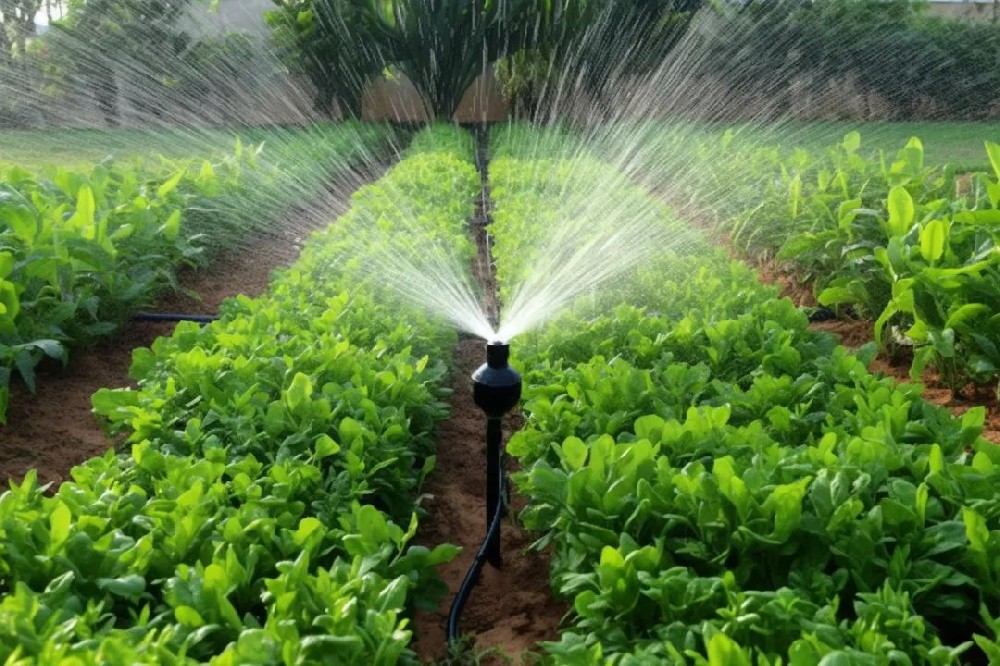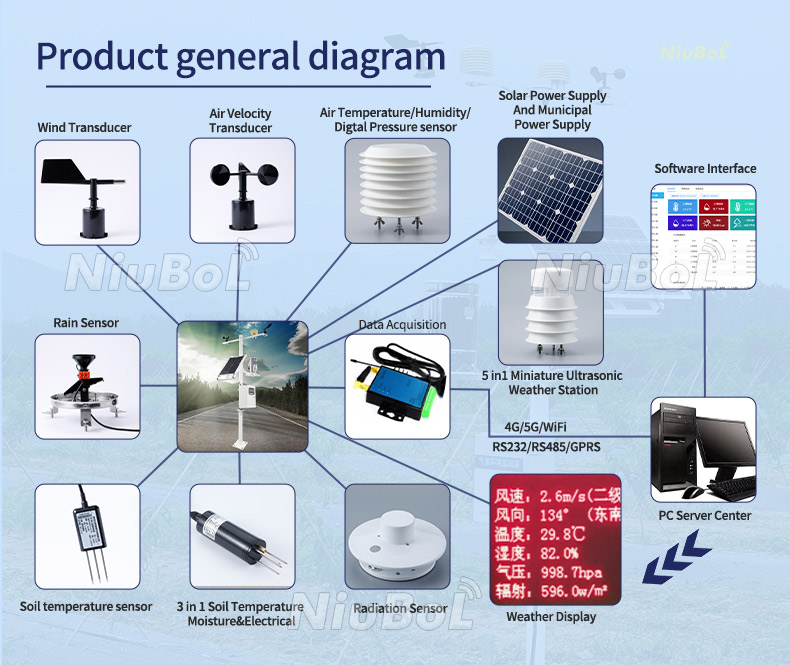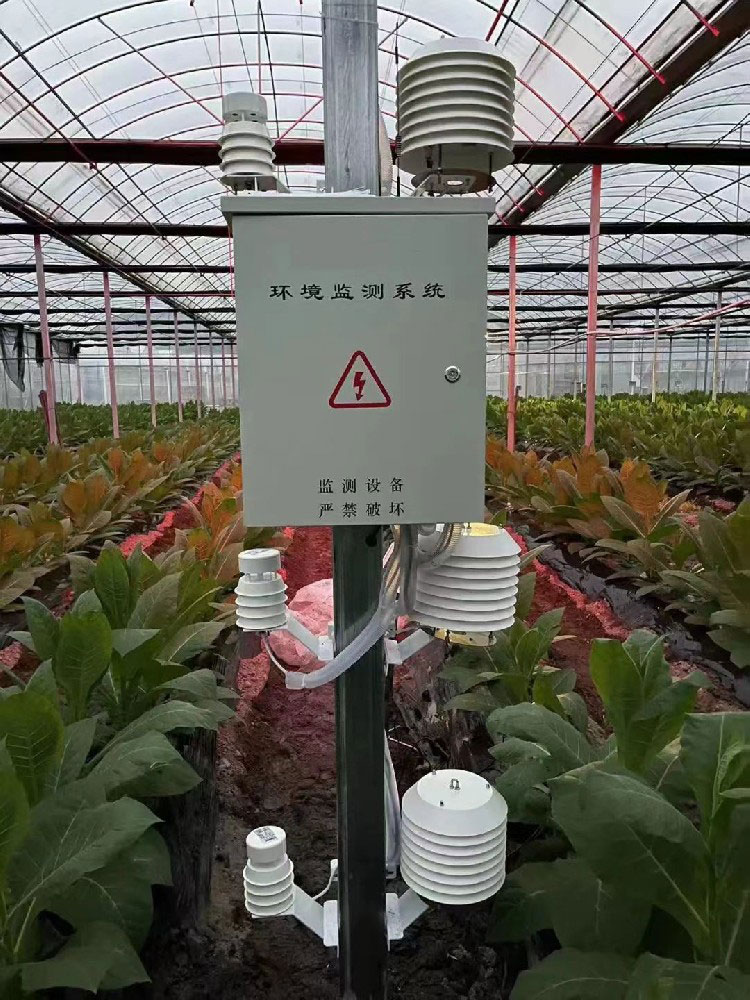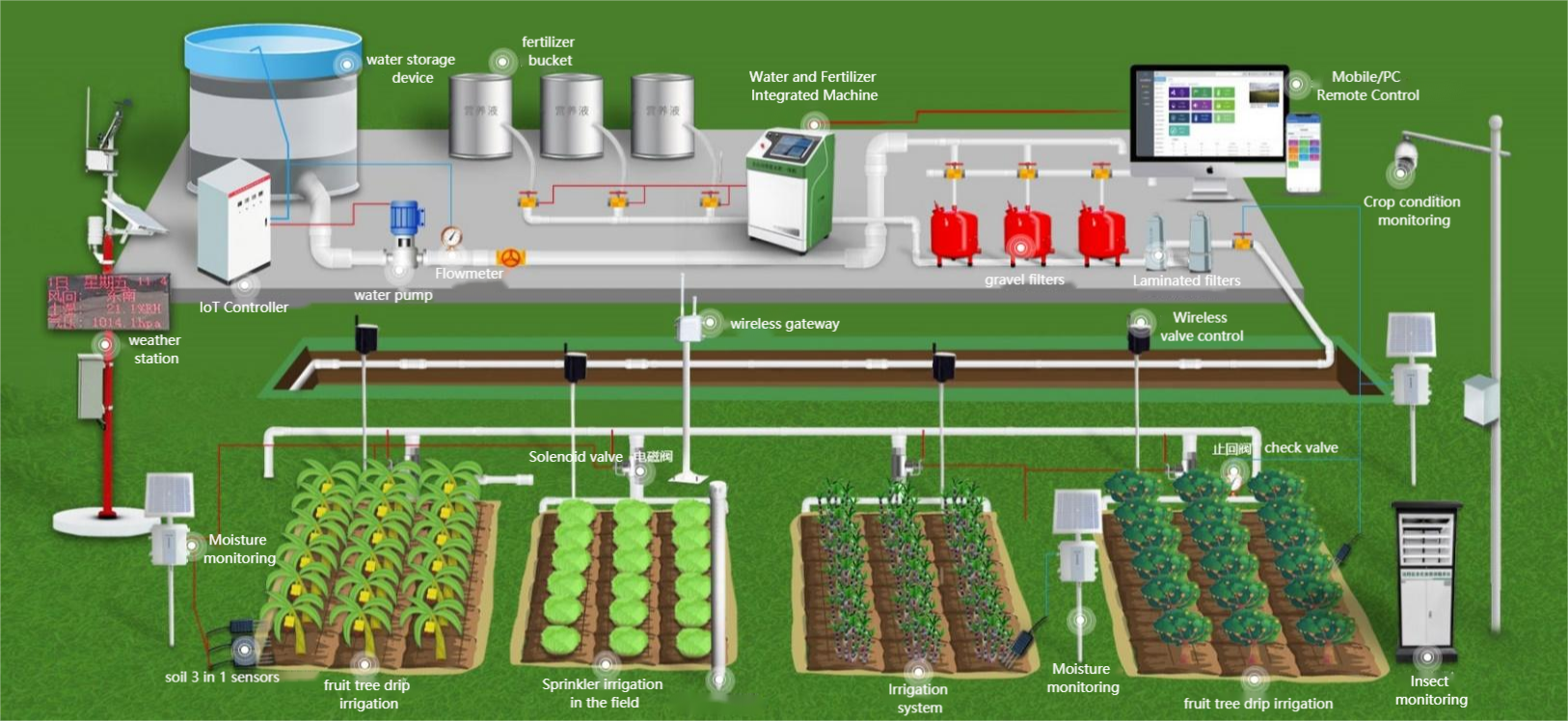

— Blogs —
—Products—
 Consumer hotline +8618073152920
Consumer hotline +8618073152920 WhatsApp:+8615367865107
Address:Room 102, District D, Houhu Industrial Park, Yuelu District, Changsha City, Hunan Province, China
Product knowledge
Time:2025-10-11 14:24:21 Popularity:576
Future of Smart Agriculture: Achieving Precision Agriculture and Sustainability with Internet of Things (IoT) Sensors

Under the dual pressures of global climate change and resource scarcity, agriculture is ushering in a wave of digital transformation.
Internet of Things (IoT) sensors enable farmers, for the first time, to see the "breathing" of the soil, understand the rhythms of crops, and predict weather changes.
From citrus orchards to greenhouse tomatoes, from aquaculture to ecological monitoring, smart agriculture is achieving triple improvements in yield, quality, and sustainability through "data-driven decision-making."

Agriculture is undergoing a profound, technology-driven transformation known as "Agriculture 4.0." At the heart of this revolution are IoT sensors, which serve as bridges connecting the physical world and the digital realm. By deploying sensors in fields, greenhouses, water bodies, and even forests, farm owners and managers can obtain unprecedented precise data in real-time, transforming traditional "empirical" agriculture into "data-driven" precision agriculture.
IoT sensors can continuously monitor a series of key environmental parameters, including:
Soil Health: Moisture, temperature, pH value, EC (electrical conductivity), and nutrient levels.
Meteorological Conditions: Temperature, humidity, rainfall, wind speed, wind direction, and solar radiation.
Crop Physiology: Leaf surface humidity, stem diameter, and fruit expansion rate.
Water Environment: Dissolved oxygen, pH value, ammonia nitrogen, turbidity, etc. (especially for aquaculture).
These real-time, high-precision data form the cornerstone for achieving automation and optimizing resource allocation.

Perception Layer (Sensors): Soil, water quality, meteorological, and crop monitoring sensors.
Transmission Layer (Connectivity): LoRa, NB-IoT, 4G/5G networks for remote communication.
Cloud Analysis Layer (Cloud + AI): AI models analyze trends, generate irrigation recommendations, and issue warnings.
Execution Layer (Automation): Automated irrigation and fertilization equipment execute decisions based on algorithms.
From data collection to precise execution, it forms a closed loop of agricultural intelligence, ensuring every drop of water and every gram of fertilizer is used in the most appropriate place.
Precision Irrigation: Water-Saving and Efficiency-Enhancing Practices in Citrus Planting and Greenhouse Tomatoes
Water scarcity is a severe challenge facing global agriculture. The application of IoT sensors in smart irrigation has greatly improved water resource utilization efficiency.
Traditional citrus irrigation often uses fixed timing or surface-based experiential methods, easily leading to water waste or water stress.
Optimizing Citrus Water Management: How Sensors Achieve "On-Demand Supply"
Deploying soil sensors in citrus plantations can monitor soil moisture content at different depths (e.g., 15cm, 30cm, 60cm) in real-time. The system dynamically adjusts irrigation volume and timing based on the precise water demand curves for different growth stages of citrus trees (such as flowering, fruit setting, and fruit bulking periods), combined with evapotranspiration predictions from meteorological data.
- Avoid Waterlogging: Ensures soil moisture does not exceed thresholds, preventing root rot and improving soil aeration.
- Increase Yield and Sugar Content: Precisely controls moisture during key growth periods to promote uniform fruit growth and sugar accumulation, achieving high quality and high returns.
- Energy Savings: Operates pumps only when crops truly need water, reducing electricity consumption and system wear.
Actual Application Case: A citrus plantation along the Mediterranean coast achieved a 30% reduction in water usage after introducing a smart irrigation system, while the grade rate of citrus (meeting export standards) increased by 8%, greatly enhancing market competitiveness.
The influence of IoT sensors extends far beyond traditional planting, profoundly changing aquaculture and agricultural meteorological services.
Precision Management in Greenhouse Tomato Production: High-Yield Models Driven by Soil Sensors
In controlled greenhouse environments, the refined application of soil sensors is crucial for high-value crops like tomatoes.
In greenhouses, soil sensors not only monitor moisture but also focus on EC value (electrical conductivity), a key indicator of nutrient concentration in soil solutions. Tomatoes are highly sensitive to changes in nutrient concentrations.
Case Study: A case study on modern greenhouse tomatoes shows that integrating soil sensors, climate sensors, and drip irrigation systems enables the system to automatically and precisely adjust water-fertilizer ratios (integrated water and fertilizer), ensuring the EC value around tomato roots remains in the optimal range (e.g., 2.5–3.5 mS/cm).
Results: This refined management not only increased tomato yields by over 15% but also significantly improved fruit uniformity and taste, achieving dual enhancements in resource utilization efficiency and product quality.

In the context of agriculture facing climate change, resource scarcity, and growing consumer demands for food safety, precision agriculture is no longer optional but essential.
Niubol is always committed to providing the most reliable and advanced IoT sensor solutions for global agricultural partners. Our flagship systems integrate high-precision hardware, AI-driven data models, and intuitive user platforms, ensuring every user can easily achieve:
- Water usage reduction of 20%+
- Pesticide usage reduction of 30%+
- Significant improvements in crop yield and quality
We believe that the future of agriculture is sustainable, efficient, and data-driven.
Smart agriculture not only serves land-based planting but is also transforming aquaculture and ecological management.
Aquaculture: Water quality sensors monitor dissolved oxygen, pH, ammonia nitrogen, and temperature in real-time, automatically adjusting aerators and feeding strategies.
Precision Meteorology: Micro-weather station sensors predict rainfall and evapotranspiration, helping farmers rationally schedule spraying and harvesting.
Smart Forestry: Forest sensor networks monitor soil moisture, wind speed, and smoke to support fire prevention and carbon sink monitoring.
Through the Niubol cloud platform and mobile app, users can view farm real-time status anytime:
- Dashboard displays key data such as moisture, temperature, and nutrients
- AI models automatically generate irrigation and fertilization recommendations
- Anomaly warnings pushed to phones, with remote one-click device control
Enabling managers to grasp farm dynamics in real-time, no matter where they are.
Take Action Now: Contact our agricultural technology expert team immediately to get a dedicated demonstration of the Niubol precision agriculture solution. Let's embark together on your farm's digital transformation journey, achieving dual transcendence in yield and environmental protection.
Click Here: www.niubol.com 
A: The return on investment cycle varies depending on crop type, farm scale, and local water resource costs. Typically, due to significant savings in water, fertilizer, and pesticide costs, as well as increased crop yields and quality, most farms can recover the initial investment within 1-3 crop cycles. Precision irrigation and pesticide reduction are the main drivers accelerating returns.
A: Our Niubol sensor product series is specifically designed for harsh agricultural environments. All outdoor sensors feature IP67 or higher dustproof and waterproof ratings, capable of withstanding high temperatures, severe cold, UV exposure, and heavy rain erosion. Integrated industrial-grade wireless communication modules ensure reliable data transmission.
A: Absolutely suitable. With the popularization of technology, the costs of sensors and systems have dropped significantly. For small-scale high-value crop growers (such as greenhouse tomatoes, berries, and premium fruits), precise control of environmental parameters can bring higher per-unit yields and quality premiums, with even higher return on investment rates than large-scale farms. We offer flexible, scalable entry-level kits.
1.NBL-S-THR Soil Temperature Moisture Sensor datasheet
NBL-S-THR-Soil-temperature-and-moisture-sensors-Instruction-Manual-V4.0.pdf
2. NBL-S-TMC Soil Temperature Moisture EC Sensor datasheet
NBL-S-TMC-Soil-temperature-and-moisture-conductivity-sensor.pdf
3. NBL-S-TM Soil Temperature Moisture Sensor datasheet
NBL-S-TM-Soil-temperature-and-moisture-sensor-Instruction-Manual-4.0.pdf
4. NBL-S-TMCS Soil Temperature, Moisture, Conductivity and Salinity Integrated Sensor
NBL-S-TMCS-Soil-Temperature-Humidity-Conductivity-and-Salinity-Sensor.pdf
Related recommendations
Sensors & Weather Stations Catalog
Agriculture Sensors and Weather Stations Catalog-NiuBoL.pdf
Weather Stations Catalog-NiuBoL.pdf
Related products
 Combined air temperature and relative humidity sensor
Combined air temperature and relative humidity sensor Soil Moisture Temperature sensor for irrigation
Soil Moisture Temperature sensor for irrigation Soil pH sensor RS485 soil Testing instrument soil ph meter for agriculture
Soil pH sensor RS485 soil Testing instrument soil ph meter for agriculture Wind Speed sensor Output Modbus/RS485/Analog/0-5V/4-20mA
Wind Speed sensor Output Modbus/RS485/Analog/0-5V/4-20mA Tipping bucket rain gauge for weather monitoring auto rainfall sensor RS485/Outdoor/stainless steel
Tipping bucket rain gauge for weather monitoring auto rainfall sensor RS485/Outdoor/stainless steel Pyranometer Solar Radiation Sensor 4-20mA/RS485
Pyranometer Solar Radiation Sensor 4-20mA/RS485
Screenshot, WhatsApp to identify the QR code
WhatsApp number:+8615367865107
(Click on WhatsApp to copy and add friends)
